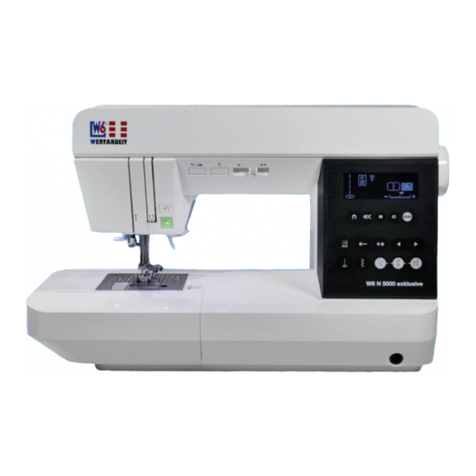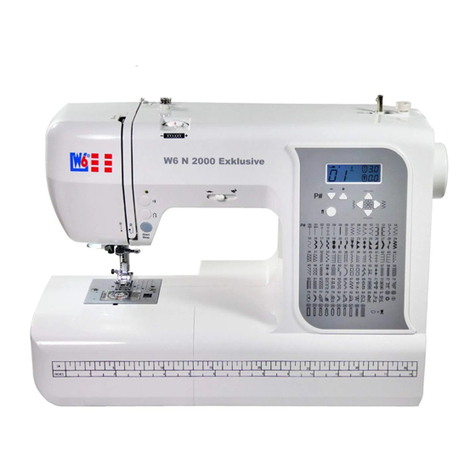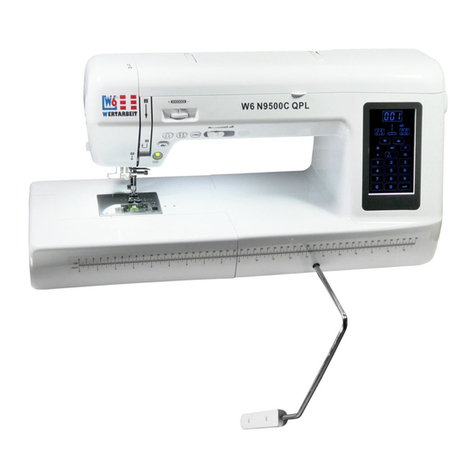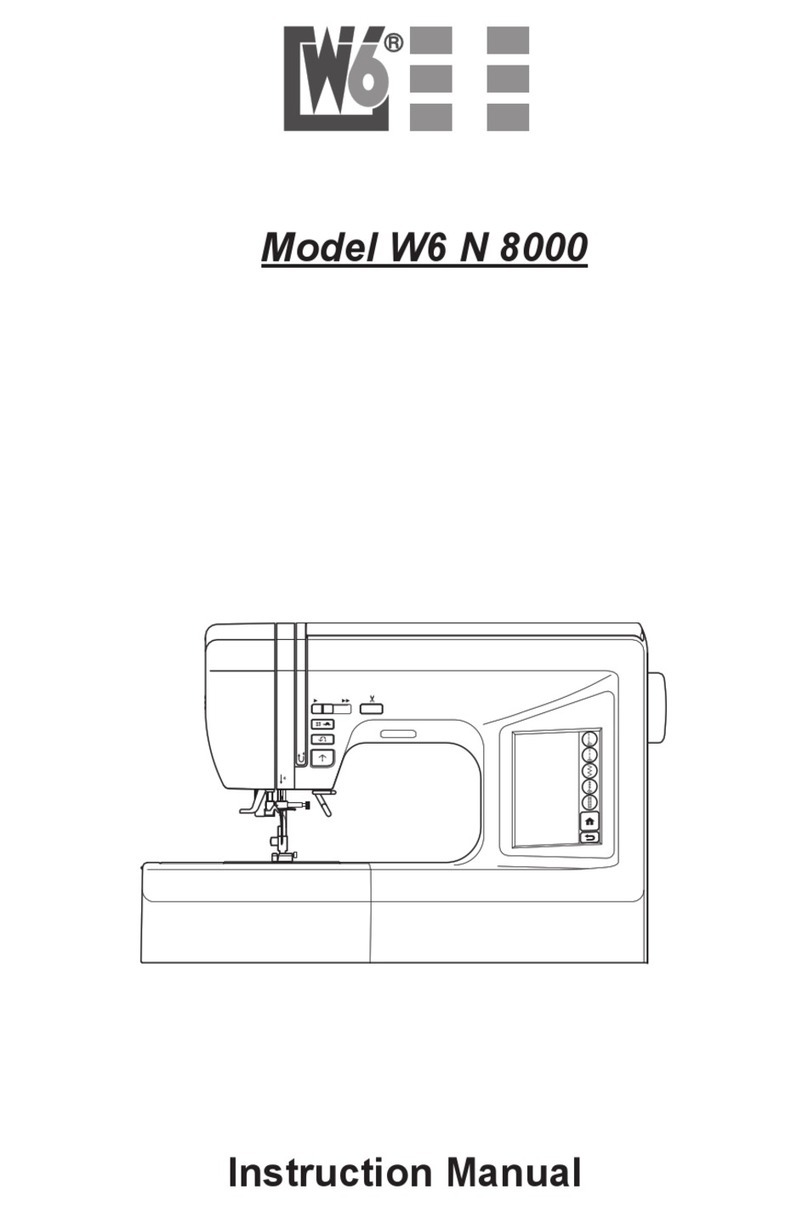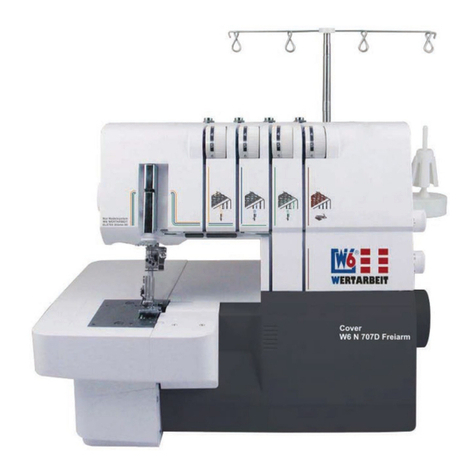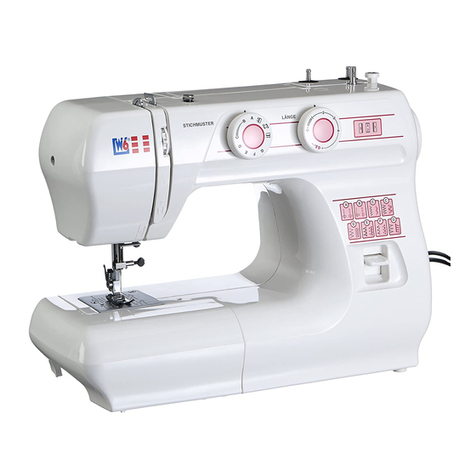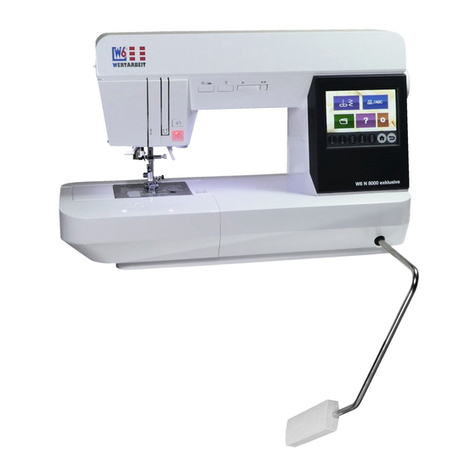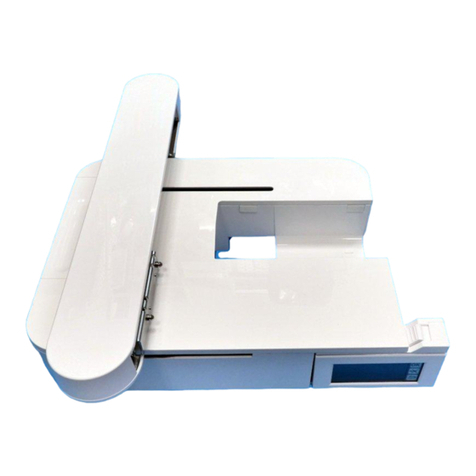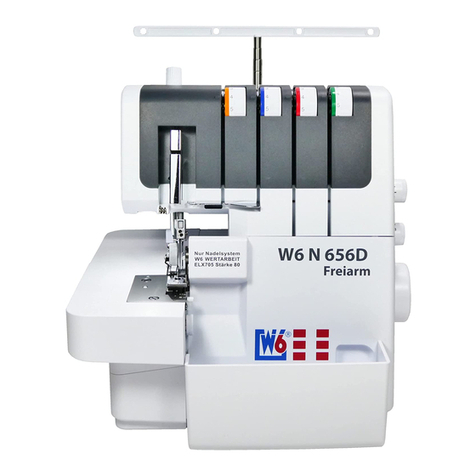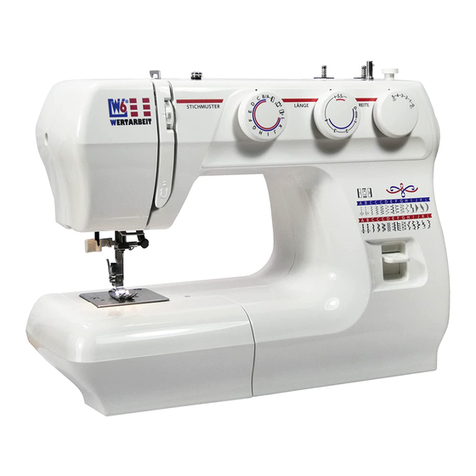
www.w6-wertarbeit.de 3
Contents
Safety notes....................................................................................................................................... 5
Important notes ................................................................................................................................. 5
Machine components........................................................................................................................ 6
Accessories....................................................................................................................................... 9
Setting up the machine................................................................................................................... 10
Connecting the machine to the mains ...................................................................................................... 10
Regulating the sewing speed ..................................................................................................................... 10
Lifting, lowering and changing the presser foot ........................................................................... 11
Setting the presser foot pressure .................................................................................................. 11
Changing the needles ..................................................................................................................... 12
Inserting the needles correctly .................................................................................................................. 12
Checking the needle.................................................................................................................................... 12
Needle and thread table.................................................................................................................. 13
Setting the stitch length.................................................................................................................. 14
Setting the differential feed (model 454D only)............................................................................. 14
Functioning of the differential feed (model 454D only) ................................................................ 15
Use of the differential feed (model 454D only) .............................................................................. 15
Activating/deactivating the cutting mechanism............................................................................ 16
Deactivating the upper knife ...................................................................................................................... 16
Activating the upper knife .......................................................................................................................... 16
Setting the cutting width................................................................................................................. 17
Seam guides.................................................................................................................................... 17
Adjusting the rolled hem slider ...................................................................................................... 18
Settings for sewing a rolled hem .......................................................... Fehler! Textmarke nicht definiert.
The telescopic thread guide ........................................................................................................... 19
Placing the spools........................................................................................................................... 19
Threading a thread.......................................................................................................................... 20
Threading the machine ............................................................................................................................... 20
Threading the upper looper............................................................................................................ 22
Threading the lower looper ............................................................................................................ 23
Threading bulk thread..................................................................................................................... 24
Threading the right needle ............................................................................................................. 25
Threading the left needle................................................................................................................ 26
Test seam ........................................................................................................................................ 27
Continuous sewing ......................................................................................................................... 27
End of a seam.................................................................................................................................. 27
Securing the thread ends ............................................................................................................... 28
At the beginning of the seam ..................................................................................................................... 28
Tying off........................................................................................................................................................ 28
At the end of the seam ................................................................................................................................ 28
